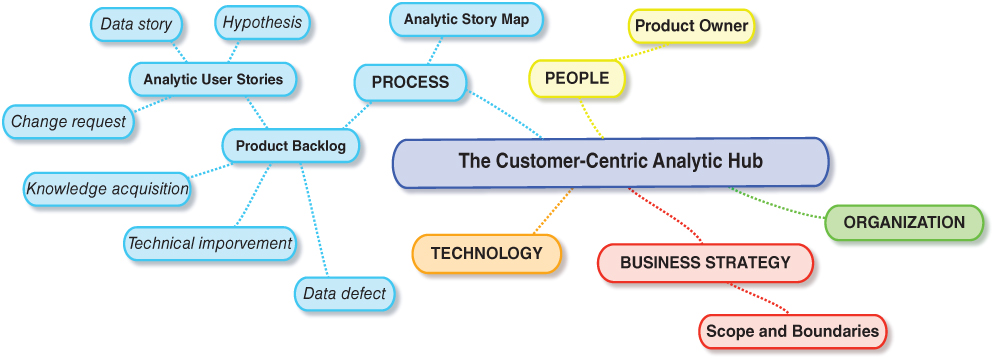Chapter 12Shaping the Analytic Product Backlog
Agile teams don't compile a large inventory of requirements up front, but instead create placeholders for requirements—our user stories—that form the backbone of the product backlog. Each product backlog item represents some component of business value. Initially, the backlog items may be very large in scope with little detail associated with them. As the backlog is prioritized, the stakeholders, product owner, and development team refine and clarify them into a collection of smaller backlog items. When backlog items are small and detailed enough, they can be moved into a sprint (see Figure 12.1). Not all requirements are at the same level of detail at the same time: A strategy of progressive refinement (or elaboration) is used to decompose large, lightly detailed requirements into smaller, more detailed components as they are slotted for analytic development work.

Figure 12.1 Analytic Product Backlog Considerations
Creating Your Analytic Product Backlog
Most backlogs are made up of user stories that have tangible value to the customer, but may also include data defects, technical improvements, or knowledge-based work, as shown in Table 12.1.
Table 12.1 Analytic Product Backlog Items
| Backlog Item Type | Description |
| Hypothesis | A feature is something that provides value or meaning to the end-customer; typically expressed ... |
Get Agile by Design now with the O’Reilly learning platform.
O’Reilly members experience books, live events, courses curated by job role, and more from O’Reilly and nearly 200 top publishers.

